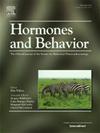老年夫妇日常生活中的激素同步:情境压力源和缓冲的作用
IF 2.4
3区 医学
Q2 BEHAVIORAL SCIENCES
引用次数: 0
摘要
恋人生理上的同步性被认为是压力和情感相互作用和共同调节的结果。然而,内分泌水平的同步——尤其是催产素水平的同步——是否有益,或者压力的相互传递是否会增加压力,这是一个争论的主题。本研究的目的是调查老年人荷尔蒙同步与情境正念、关系冲突(争吵)、情境恢复力和主观压力水平的关系。共有N = 26名年龄在52 - 75岁之间的个体(即N = 13对夫妇)在2天内提供了12次唾液样本和自我报告测量(共312项测量)。与随机打乱的二对体相比,多层次模型预测了伴侣一方对另一方的皮质醇、α -淀粉酶和催产素水平。同步性在争吵程度高的时候会更高,但在高度正念的时候会减弱。此外,在平均压力水平较高的夫妇中,催产素同步性降低。我们将这一发现解释为缓冲个人因素,以防止双重压力的传播。考虑到样本的初步特征和效果,为促进这些因素的临床干预提供启示,未来的研究需要系统地扩展这一研究和应用领域。本文章由计算机程序翻译,如有差异,请以英文原文为准。
Hormonal synchrony in older couples' everyday life: The role of situational stressors and buffers
Synchrony in physiology in romantic couples has been suggested to be a result of joint interaction and co-regulation of stress and affect. However, it is subject of debate whether synchrony in endocrine levels - especially in oxytocin - is generally beneficial or if a reciprocal transmission of stress may even be stress-increasing. The aim of this study was to investigate hormonal synchrony in older couples in relation to situational mindfulness, relationship conflict (quarreling), as well as situational resilience and subjective stress levels. A total of N = 26 individuals (i.e., N = 13 couples) aged between 52 and 75 years provided saliva samples and self-report measures 12 times over the course of 2 days (312 measures in total). Superior to randomly scrambled dyads, multilevel models predicted cortisol, alpha-amylase, and oxytocin levels from one partner for the other. Synchrony was higher at times of high levels of quarreling but mitigated in moments of high mindfulness. Moreover, oxytocin synchrony was reduced in couples exerting higher average levels of stress. We interpret this finding as buffering personal factors to protect against the transmission of dyadic stress. To draw implications for clinical interventions to promote these factors and given the preliminary character of the sample and the effects, future studies need to systematically expand this field of research and application.
求助全文
通过发布文献求助,成功后即可免费获取论文全文。
去求助
来源期刊

Hormones and Behavior
医学-行为科学
CiteScore
6.70
自引率
8.60%
发文量
139
审稿时长
91 days
期刊介绍:
Hormones and Behavior publishes original research articles, reviews and special issues concerning hormone-brain-behavior relationships, broadly defined. The journal''s scope ranges from laboratory and field studies concerning neuroendocrine as well as endocrine mechanisms controlling the development or adult expression of behavior to studies concerning the environmental control and evolutionary significance of hormone-behavior relationships. The journal welcomes studies conducted on species ranging from invertebrates to mammals, including humans.
 求助内容:
求助内容: 应助结果提醒方式:
应助结果提醒方式:


